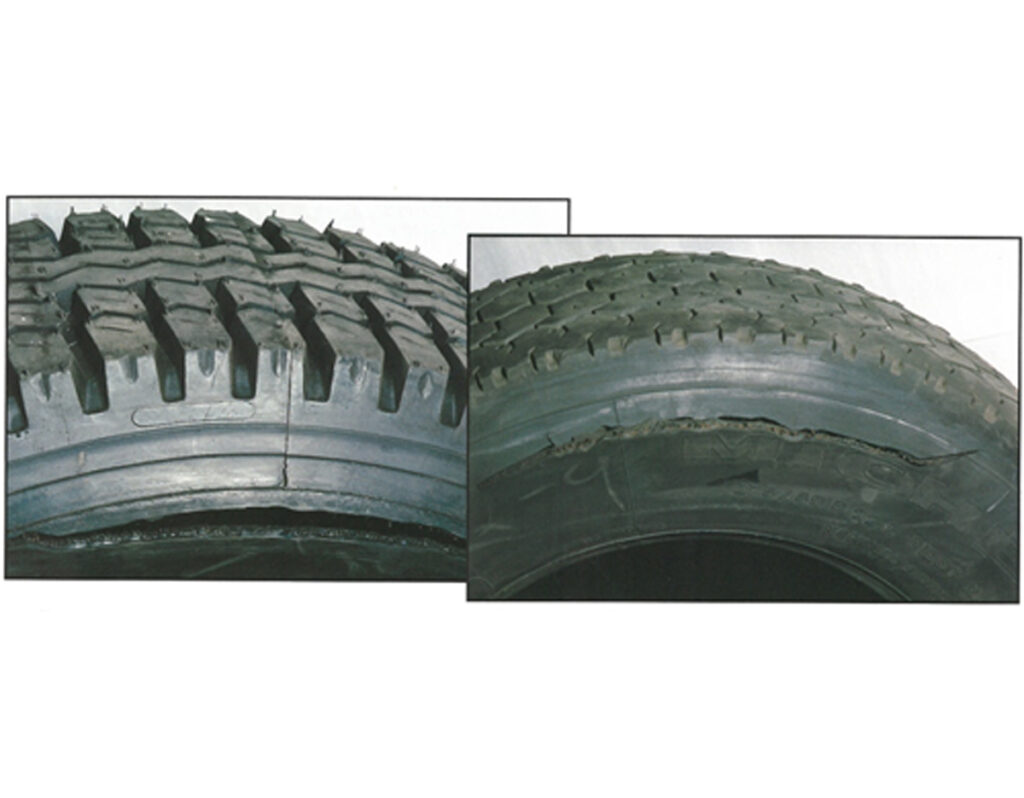When to Scrap a Run-Flat
According to Michelin, a tire that has been driven at less than 80% of normal recommended operating pressure—the manufacturer’s cold inflation pressure required to support a given load—is considered to be run-flat. Proper OSHA (Occupational Safety and Health Administration) regulations must be followed when putting any tire and wheel back in service. Thus, any tire determined or suspected to be run-flat should be inspected thoroughly prior to returning service.

Run-Flat Indicators
Below are some common indicators of a run-flat tire:
- Inner Liner: Any breach to the inner liner can result in the introduction of moisture to the casing and subsequent corrosion. Look for any wrinkling, discoloration, cracking and/or degradation.
- Sidewall: Using an indirect light source, look for abrasion marks caused by road contact, creases in the sidewall, ripples, bulges or soft spots in the flex area, or protruding wire filaments that may signify broken sidewall cords.
- Repair Patches: Inspect for lifting, cracks, splits and general condition.
If any of these issues are discovered, the tire should be made unusable and scrapped. It’s also a good idea to mark all low tires as a run flat tire.
Run-Flat Inflation Procedures
A run-flat tire is susceptible to zipper rupture—a circumferential rupture in the flex zone of the sidewall associated with underinflation and/or overloading, or corrosion caused by any moisture that is permitted to reach ply cords. During the re-inflation process, zipper ruptures will result in the tire rapidly losing pressure at explosive forces, posing a serious risk to tire team personnel and/or drivers. “Once a tire has been inspected and deemed to be free of the above run-flat indicators, the following inflation procedures should be followed,” added Greg Lombardi, Mechanical Service Director at Bauer Built:
- Place tire assembly on a tire stand and inflate to 5 PSI to seat the bead of the tire.
- With the valve cord removed, inflate the tire to 20 PSI in a safety cage.
- Perform a sidewall inspection and immediately deflate the tire and scrap if distortions or undulations are noticed, or a popping noise indicating a breaking of the steel cords is heard.
- If no damage is detected, continue to inflate to the 20% over the recommended pressure marked on the sidewall.
- Perform another sidewall inspection and immediately deflate the tire and scrap if distortions or undulations are noticed, or a popping noise indicating a breaking of the steel cords is heard.
- If none exist, then insert the valve core and return the tire to the desired air pressure.
- Perform one final inspection of the sidewall and wheel assembly. Return to service.
Bauer Built: Exceeding Expectations and Ensuring Safety
At Bauer Built Tire & Service, we are committed to providing a level of service to our customers that is the best, then strive to make it better. Further, your safety and that of our personnel is paramount. By providing tips that can help you spot tire damage, correct issues and/or scrap when necessary, we’re ensuring you remain safely on the road.
Categories: Bauer Built Blog, Tire Care Tips